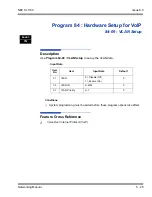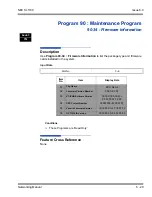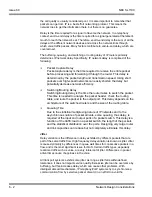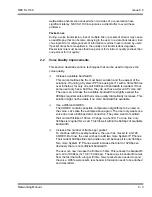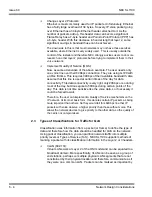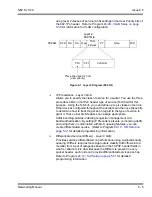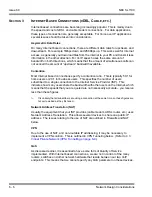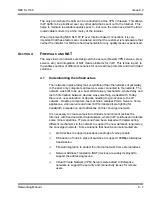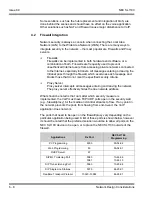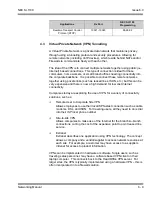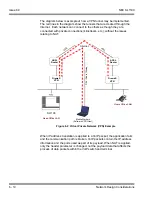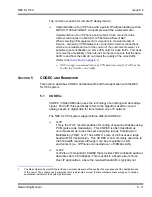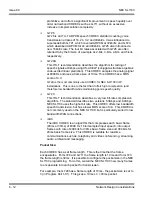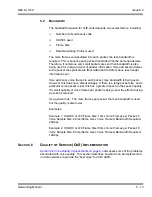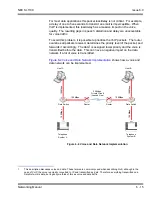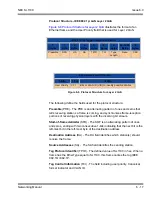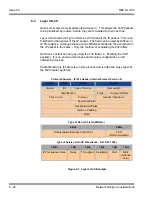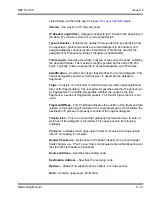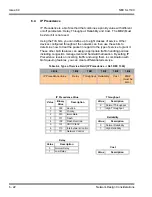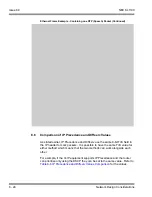
NEC SL1100
Issue 6.0
Networking Manual
6 - 9
4.3
Virtual Private Network (VPN) Tunnelling
A Virtual Private Network is a private data network that maintains privacy
through using a tunneling protocol and security procedures. Allowing for
remote networks (including VoIP devices), which reside behind NATs and/or
Firewalls to communicate freely with each other.
The idea of the VPN is to connect multiple networks together using public (i.e.,
Internet) based connections. This type of connection is ideal for those
commuters, home workers, or small branch offices needing connectivity into
the corporate backbone. It is possible to connect these remote networks
together using private links (such as leased lines, ISDN, etc.) but this can be
very expensive and there is now a high demand for low cost Internet
connectivity.
Companies today are exploring the use of VPN for a variety of connectivity
solutions, such as:
Remote User to Corporate Site VPN
Allows employees to use their local ISP fastest connection such as cable
modems, DSL, and ISDN. For traveling users, all they need to do is dial
into their ISP local phone number.
Site-to-site VPN
Allows companies to make use of the Internet for the branch-to-branch
connections, cutting the cost of the expensive point to point leased line
service.
Extranet
Extranet describes one application using VPN technology. The concept
allows a company and a vendor/supplier to access network resources at
each site. For example, a customer may have access to a suppliers
intranet for access to product information.
VPNs can be implemented in hardware or software. Single users, such as
traveling sales personnel, may have a software based VPN client on their
laptop computer. This connects back to the Head Office VPN server. For
larger sites, the VPN is typically implemented using a hardware VPN – this is
often incorporated in to a firewall solution.
Realtime Transport Control
Protocol (RTCP)
10021~10083
84-26-02
Applications
Rx Port
NEC SL1100
Programming
Summary of Contents for SL1100
Page 1: ...Networking Manual NDA 31190 Issue 6 0 SL1100...
Page 2: ......
Page 4: ......
Page 22: ...Issue 6 0 NEC SL1100 1 2 Introduction THIS PAGE INTENTIONALLY LEFT BLANK...
Page 62: ...Issue 6 0 NEC SL1100 5 30 Programming THIS PAGE INTENTIONALLY LEFT BLANK...
Page 94: ...Issue 6 0 NEC SL1100 6 32 Network Design Considerations THIS PAGE INTENTIONALLY LEFT BLANK...
Page 134: ...Issue 6 0 NEC SL1100 8 10 DHCP Client THIS PAGE INTENTIONALLY LEFT BLANK...
Page 159: ...NEC SL1100 Issue 6 0 Networking Manual 9 25 Figure 9 7 Log In to IP Phone...
Page 181: ...NEC SL1100 Issue 6 0 Networking Manual 9 47 Figure 9 25 IP System Operation Setup...
Page 206: ...Issue 6 0 NEC SL1100 9 72 IP Multiline Station SIP Figure 9 36 NAPT Configuration Example...
Page 230: ...Issue 6 0 NEC SL1100 10 18 IP Single Line Telephone THIS PAGE INTENTIONALLY LEFT BLANK...
Page 232: ...Issue 6 0 NEC SL1100 11 2 NAPT Figure 11 1 NAPT Configuration Example...
Page 242: ...Issue 6 0 NEC SL1100 12 4 All DSP Busy Indication THIS PAGE INTENTIONALLY LEFT BLANK...
Page 290: ...Issue 6 0 NEC SL1100 13 48 SL Net THIS PAGE INTENTIONALLY LEFT BLANK...
Page 291: ......
Page 292: ...SL1100 Networking Manual NEC Corporation of America Issue 6 0...

